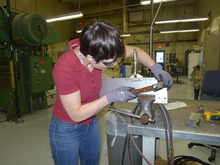Pro Forma Work Orders
Many organizations have outside contractors who make regular inspections and perform whatever maintenance is found necessary.
For example, you might have an outside company inspect your elevators every few months and do whatever work is required.
Similarly, you might have an outside contractor look after your fire safety equipment, checking it on a regular basis and providing any needed maintenance.
In this kind of situation, you don't give the contractor a specific work order?the contractor decides what ought to be done.
Still, it's important to keep track of what the contractor does on each visit, so that your records are complete.
(Your insurance company may require you to preserve this information; it's also important to have a complete maintenance history if you switch to a different contractor.)
The best way to track what gets done is to create work orders after the fact.
(These are sometimes called "pro forma" work orders -- done for the sake of form.)
In other words, every time the contractor does work, you create a work order describing what work was done.
In this way, you maintain a clear history of what work has been done on your units; you never have to ask, "When was the last time this fire extinguisher got recharged?"




.jpg)